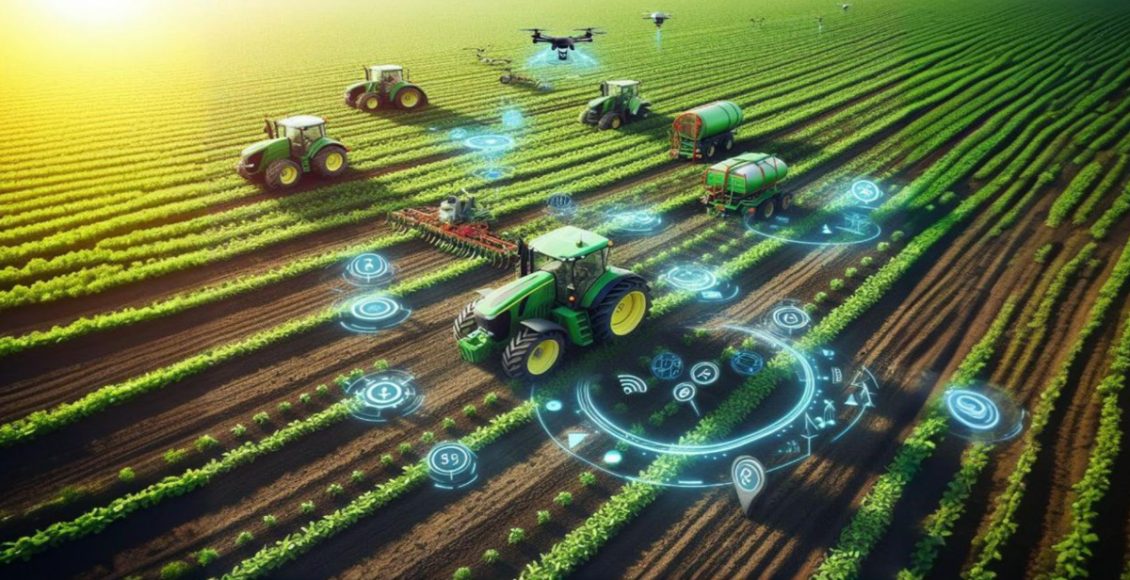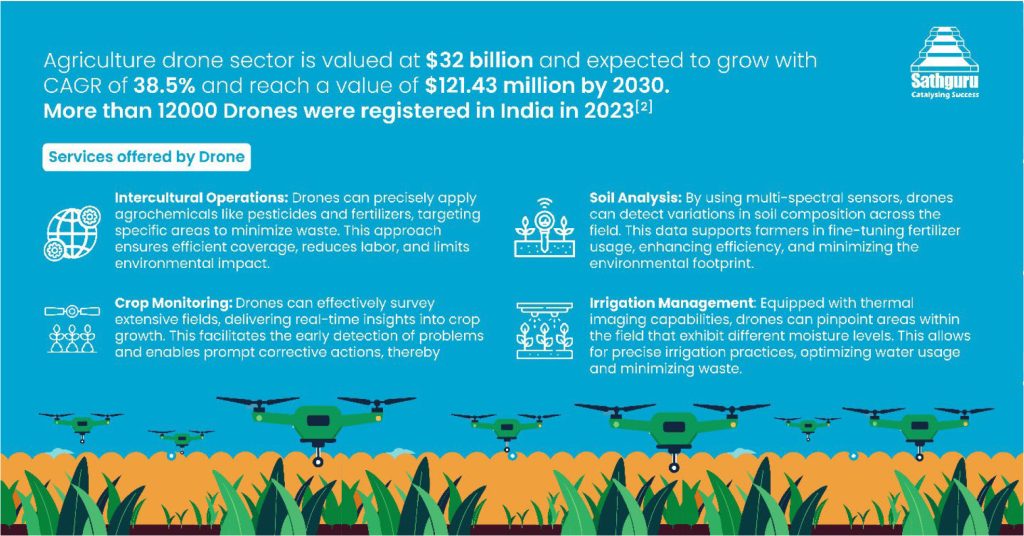
Farm Mechanisation in India: Unveiling the drivers and outlook
The global agriculture machinery market, valued at USD 154 billion, is projected to grow at a CAGR of 5.6% by 2030. In India, the agricultural machinery market is valued at USD 14.3 billion and is forecasted to reach USD 24.05 billion by 2029, growing at a CAGR of 10.96%. Agricultural mechanization trends vary across regions based on factors such as land size, labor availability, access to machinery, government policies, and extension services. While some nations have made significant progress, others are still in the early stages. Lower-income countries commonly use manual tools, while wealthier economies have shifted to machinery-driven farming, reducing reliance on manual labour and boosting productivity.
Agricultural mechanization in India is less than 47%, ranging from 70% in seedbed preparation, 38% in sowing/planting/transplanting, 33% in Harvesting/ threshing, and 31% in Intercultural operations[1]. This is in contrast to countries like the USA, Western Europe, and Russia, having mechanization rates above 80%, Brazil at 75%, and China at 65%. Low mechanization in India is due to fragmented landholdings, limited financial capacity, affordable labour, and high machinery costs. However, as key factors shift, the pace of mechanization is expected to accelerate significantly in the coming years.
Key Drivers of Farm Mechanization:
Farm Labour Shortage: Agriculture has historically relied on labour-intensive  tasks such as sowing, weeding, and harvesting. However, with urban migration leading to a scarcity of farm labour and rising wages [Graph 1], there is a growing shift towards automation and mechanization to maintain profitability.
tasks such as sowing, weeding, and harvesting. However, with urban migration leading to a scarcity of farm labour and rising wages [Graph 1], there is a growing shift towards automation and mechanization to maintain profitability.
Agri-Tech Startups: Agri-tech startups are transforming Indian agriculture by improving farmers’ access to credit and technology. In 2022, More than 1500 new startups entered the agricultural landscape, offering tailored loans and credit services, creating marketplaces for better prices, and driving significant improvements in mechanization levels. Some of these startups are also offering mechanization services to farmers at affordable costs, increasing the mechanization across the farming operations.
Government Initiatives: The Indian government is promoting the adoption of modern machinery in agriculture through initiatives like the Sub-Mission on Agricultural Mechanization. As per DA & FW, over 460,000 machines have been distributed with financial assistance, and more than 7,500 Custom Hiring Centers (CHCs) have been established between 2021 and 2023. Additionally, over 500 agri-tech startups received support in 2023-2024 through programs like “Innovation and Agri-Entrepreneurship Development” under the Rashtriya Krishi Vikas Yojana (RKVY-RAFTAAR). These efforts aim to promote agri-tech innovation and help farmers transition to mechanized farming.
Charting New Paths for the Age of Mechanization
The farm mechanization sector is evolving and set to transform farming in India and other countries. As mechanization becomes more widespread, service providers need to adapt by offering new and innovative solutions. Advancements in mechanization will enable the precise application of agri-inputs, significantly improving uptake efficiency and reducing waste. This shift will demand a rethinking of agrochemical companies’ product lines, especially toward developing low-volume, high-efficiency pesticides tailored for mechanized technologies like drone spraying. The ability to apply smaller quantities of inputs with greater precision will greatly reduce environmental impact and chemicals in our food chain.
 Similarly, mechanization can also transform fertilization practices. Traditional manual fertilization can be replaced by more efficient mechanical applications that offer better control over dosage and distribution for each plant. This can also lead to a surge in demand for liquid fertilizers better suited for mechanical systems.
Similarly, mechanization can also transform fertilization practices. Traditional manual fertilization can be replaced by more efficient mechanical applications that offer better control over dosage and distribution for each plant. This can also lead to a surge in demand for liquid fertilizers better suited for mechanical systems.  Companies in the fertilizer sector need to invest in the development of novel liquid fertilizers that are compatible with modern machinery.
Companies in the fertilizer sector need to invest in the development of novel liquid fertilizers that are compatible with modern machinery.
Seed companies will also have opportunities and challenges, as mechanized sowing will require seeds that can be used in machines with no yield penalty and no losses during sowing. Certain traits, such as suitability for direct sowing in the case of paddy crop, uniform maturity, and resistance to seed shattering in pulses, will be of important consideration.
Conclusion
The adoption of agricultural mechanization in India is set to revolutionize farming operations. This transformation will be driven by labor shortages, expanding offerings and services by Agtech startups, and government support. As more farmers embrace mechanization, the benefits will become more apparent, paving the way for widespread integration across the agricultural landscape.
References:
[1] Report titled “Research and Development in Farm Mechanization for Small And Marginal Farmers in the Country” presented by Standing Committee on Agriculture, Animal Husbandry And Food Processing (2022-23) to Lok Sabha on 21.07.2023
[2] Article named “New horizons: Drones take flight over Indian farms” by SNV Sudhir on Deccan Herald
[Graph 1] Analysis based on data from reports titled “Agricultural Wages in India” (2013-2022) published by Statistics And Evaluation Division, Department of Agriculture & Farmers Welfare, India
[Graph 2] Sathguru Internal Analysis
Author

Connect with Author at: E-mail agribusiness@sathguru.com
 Grow Beyond
Grow Beyond 

